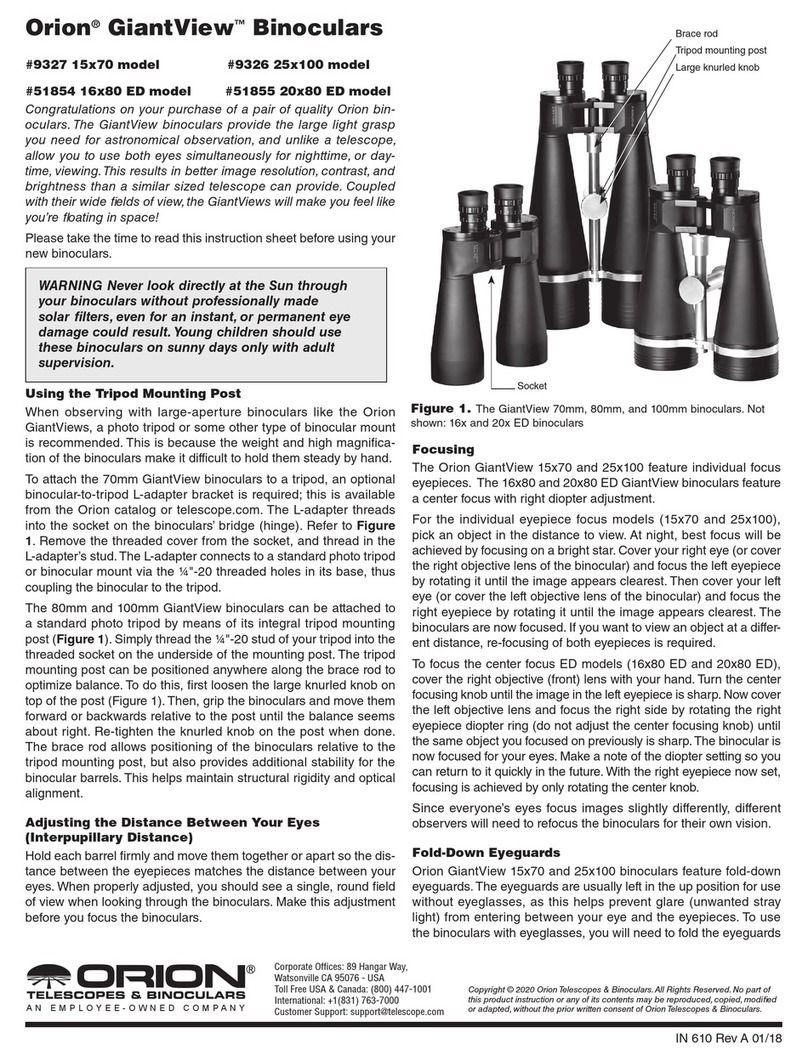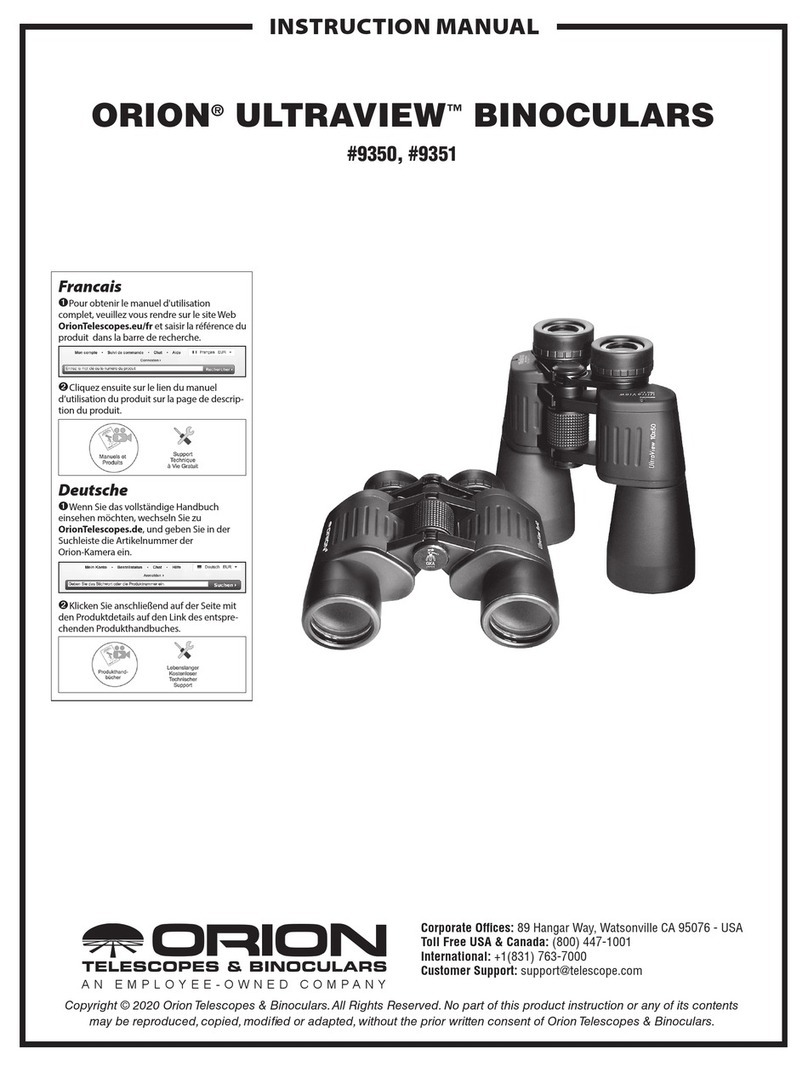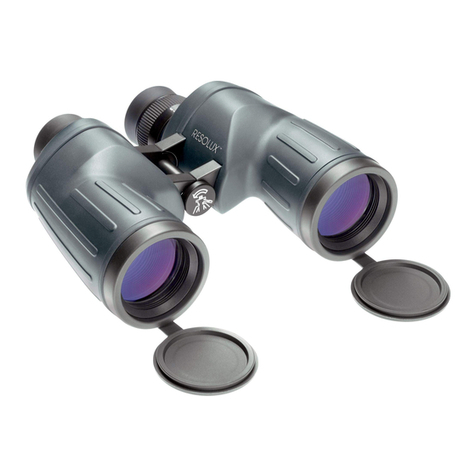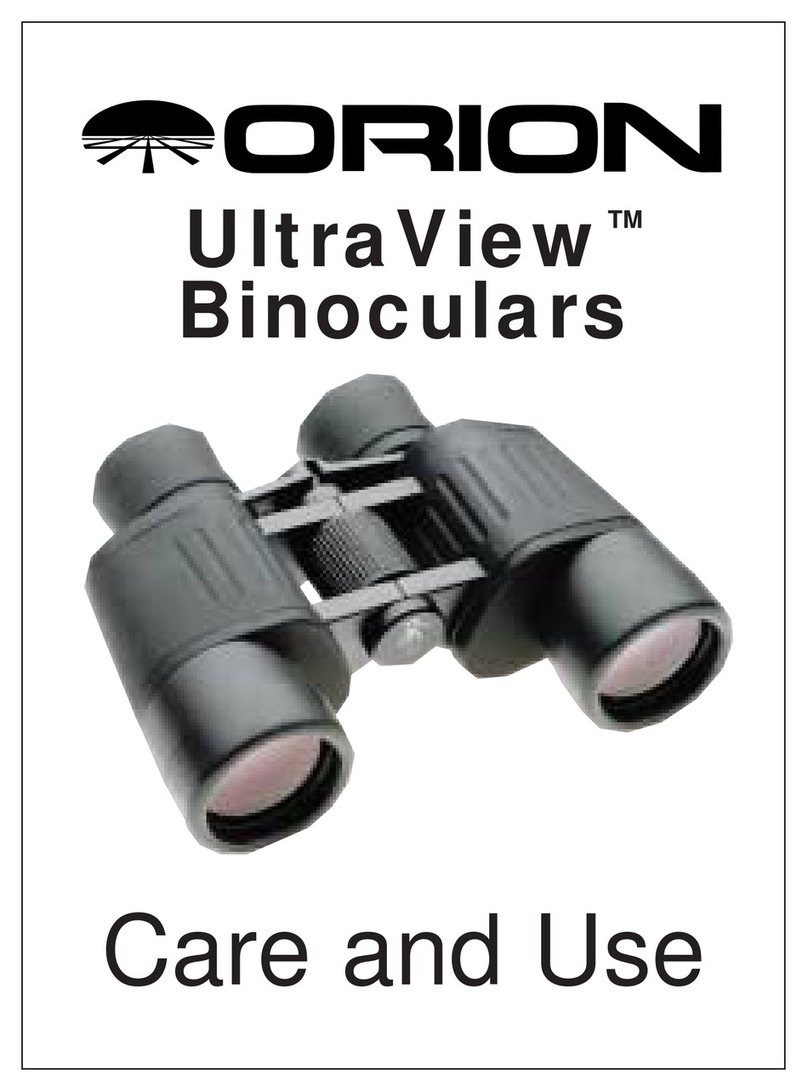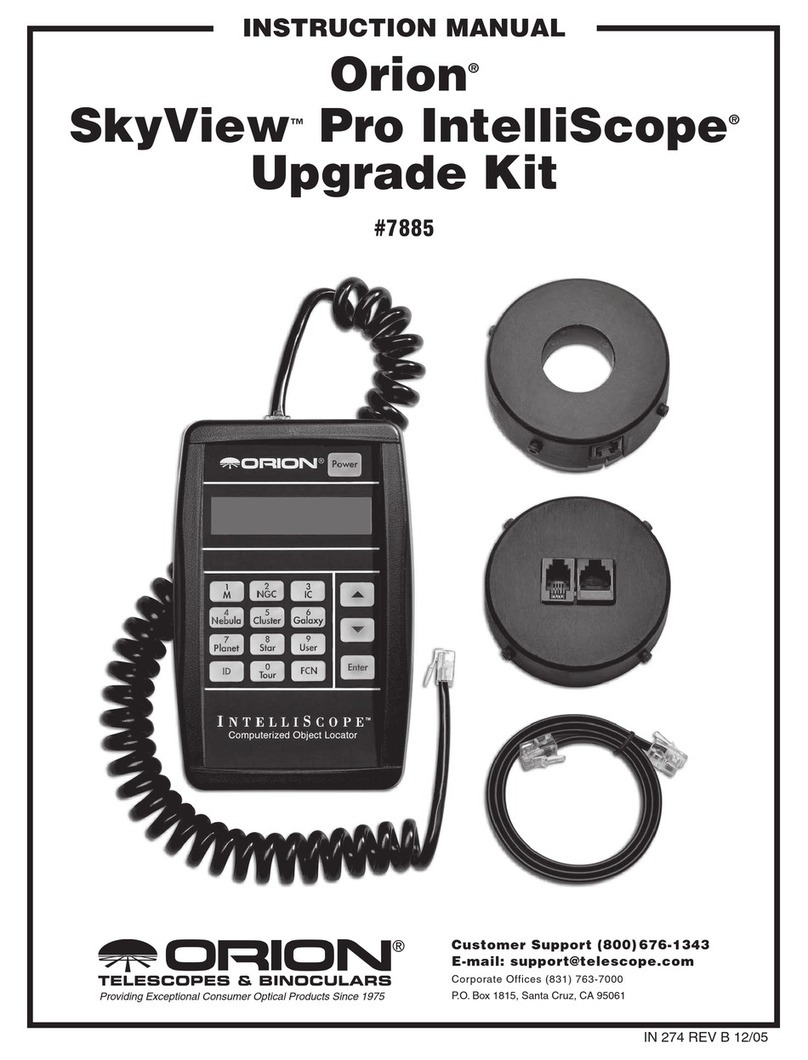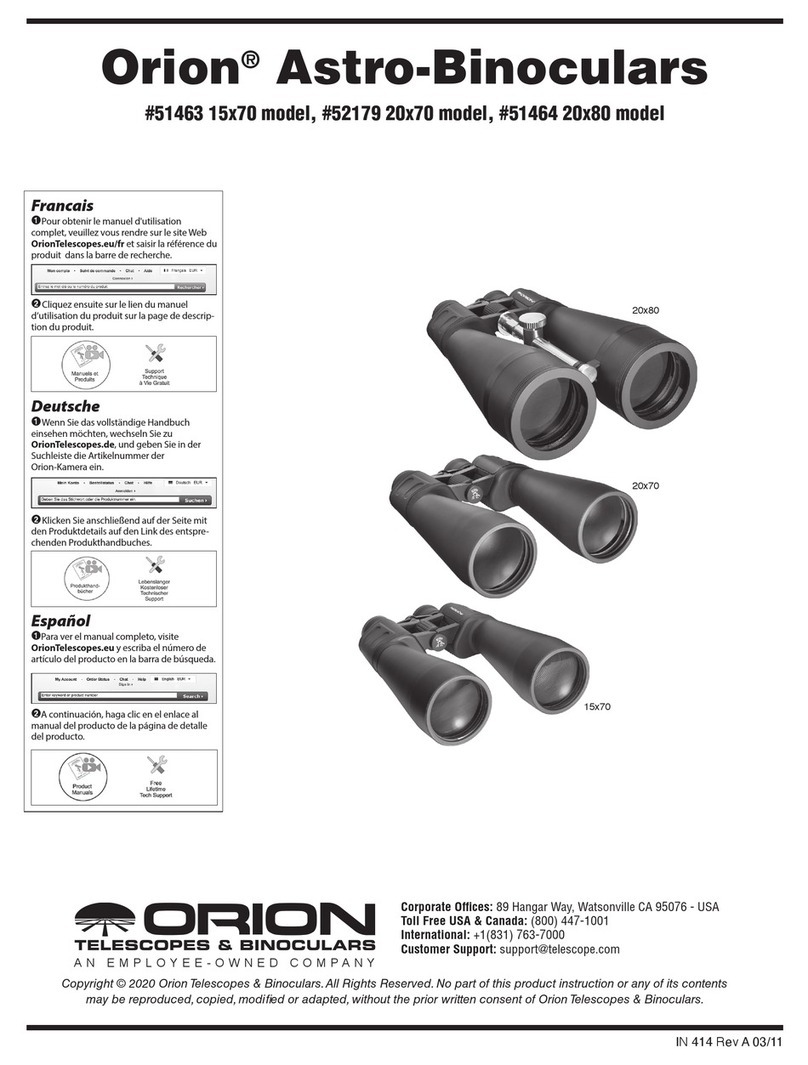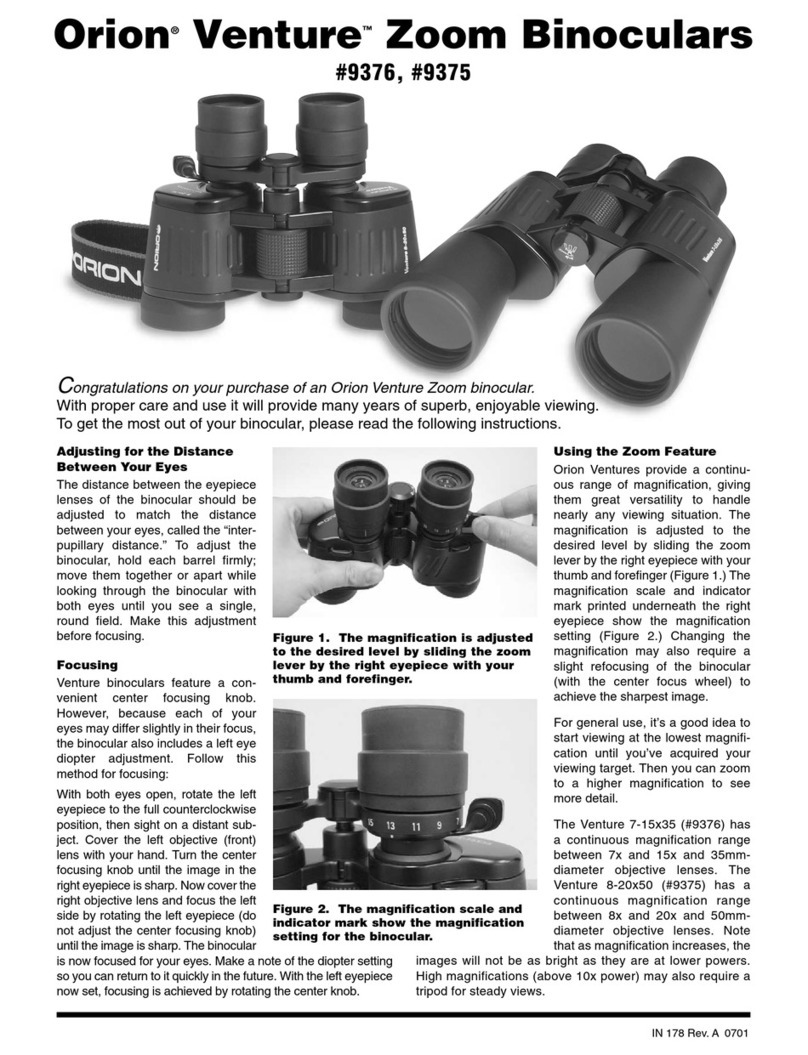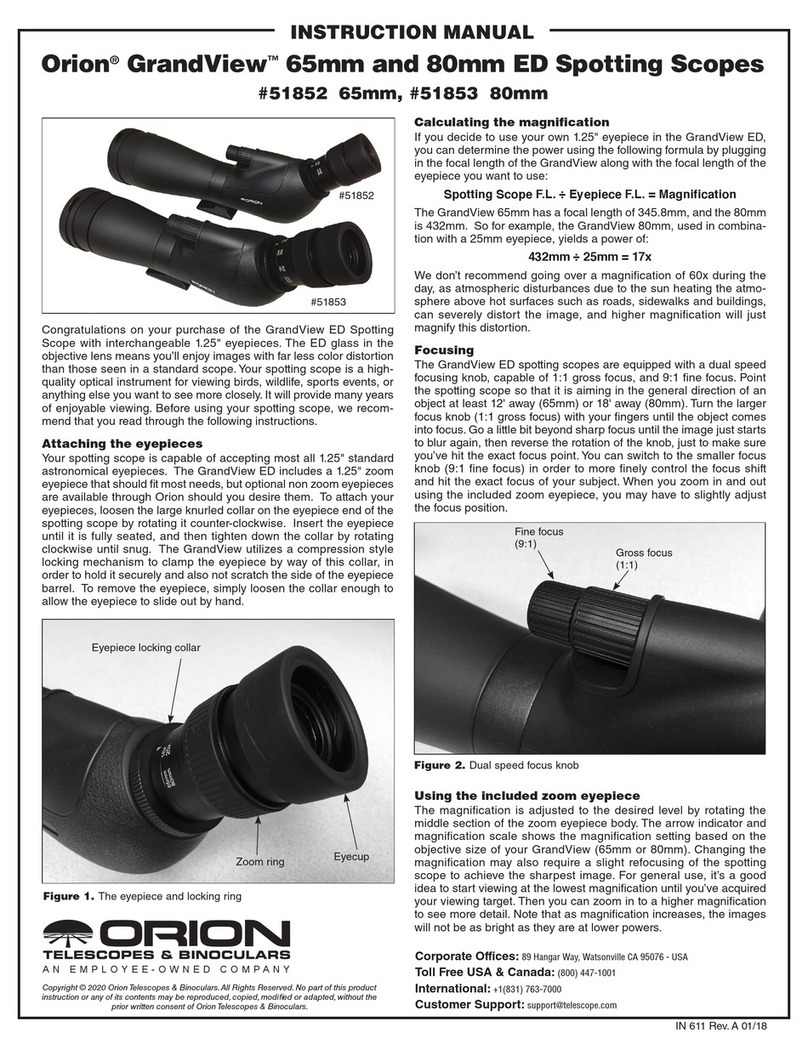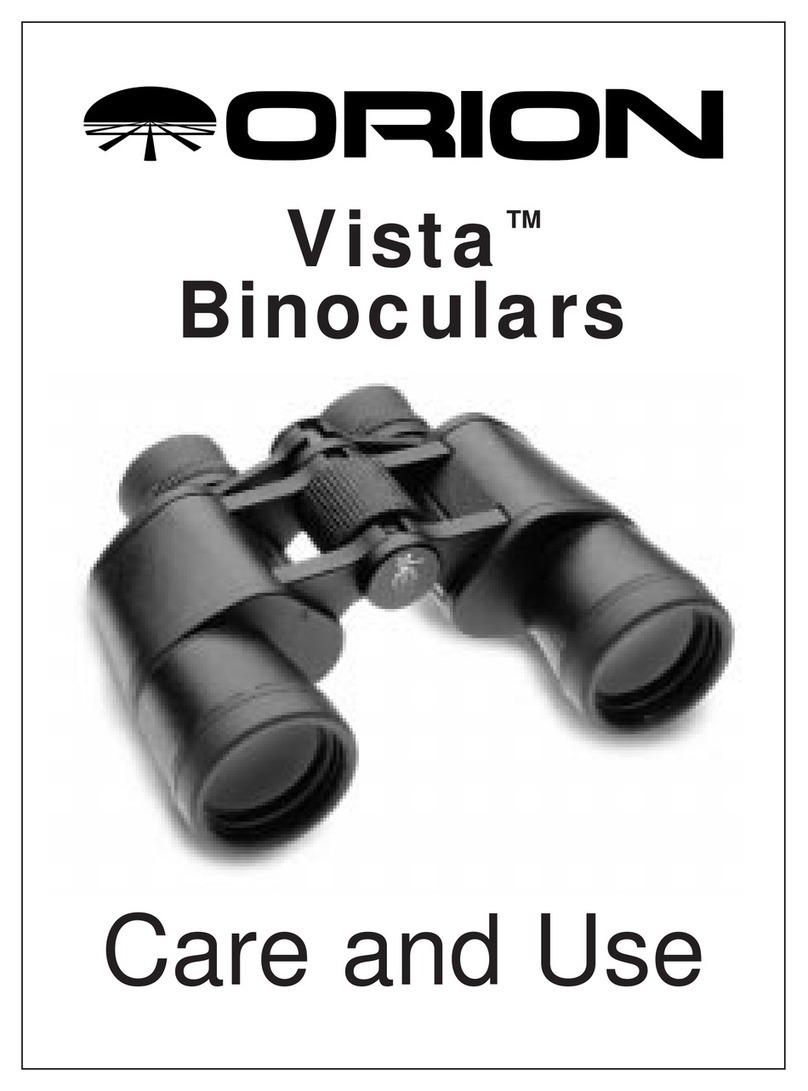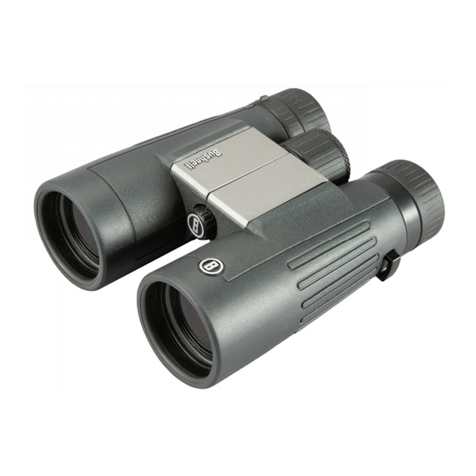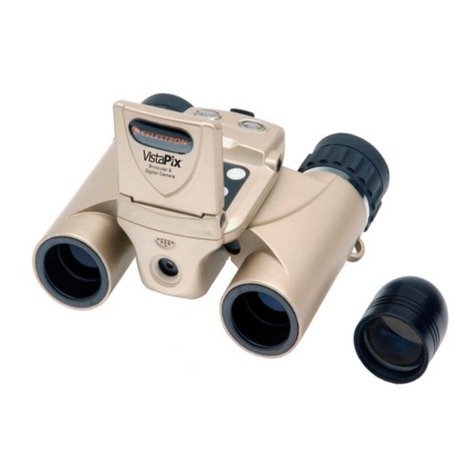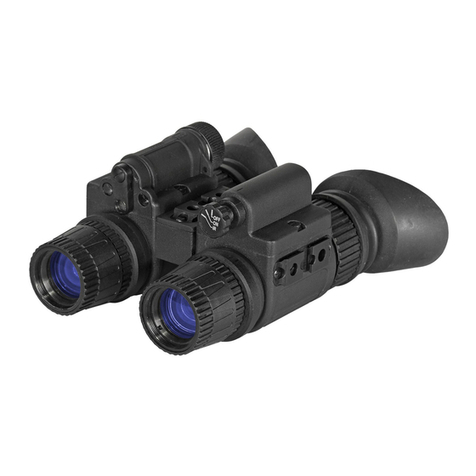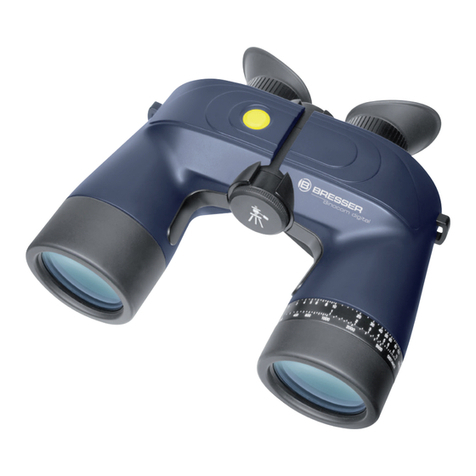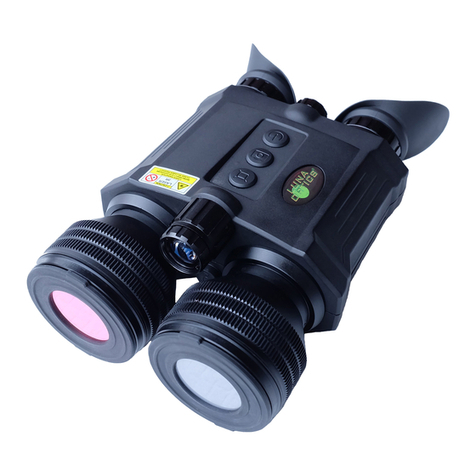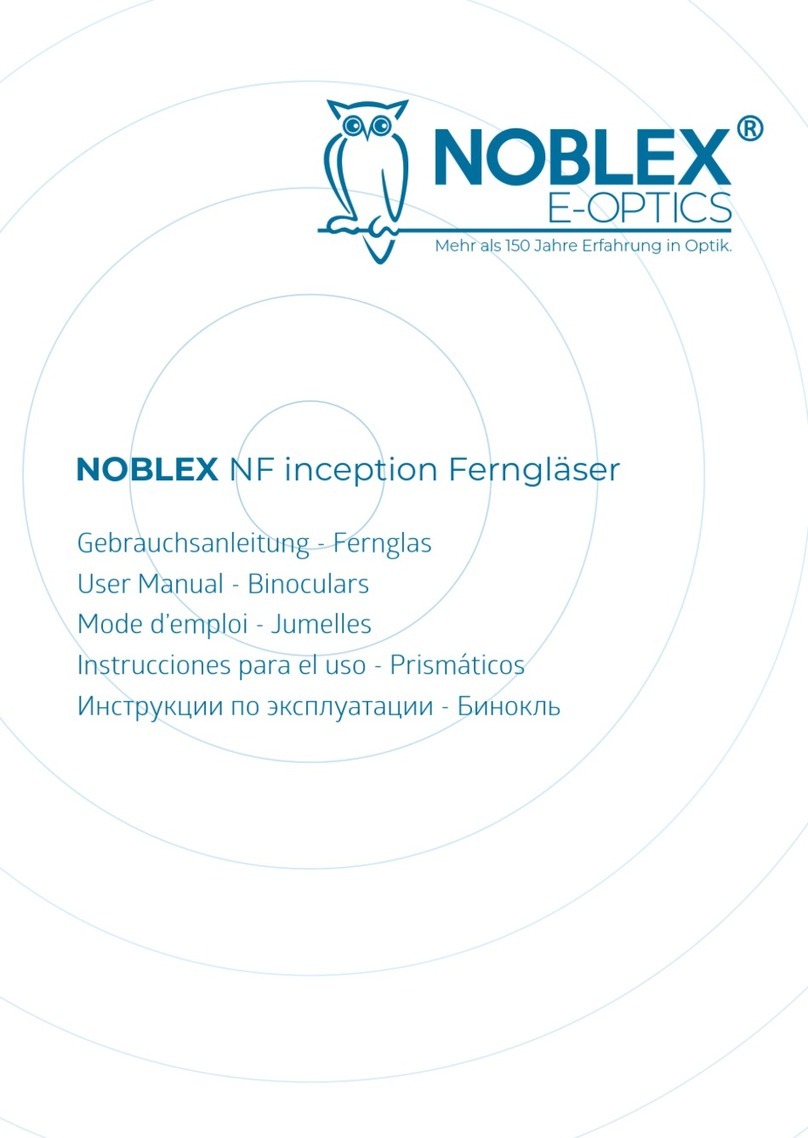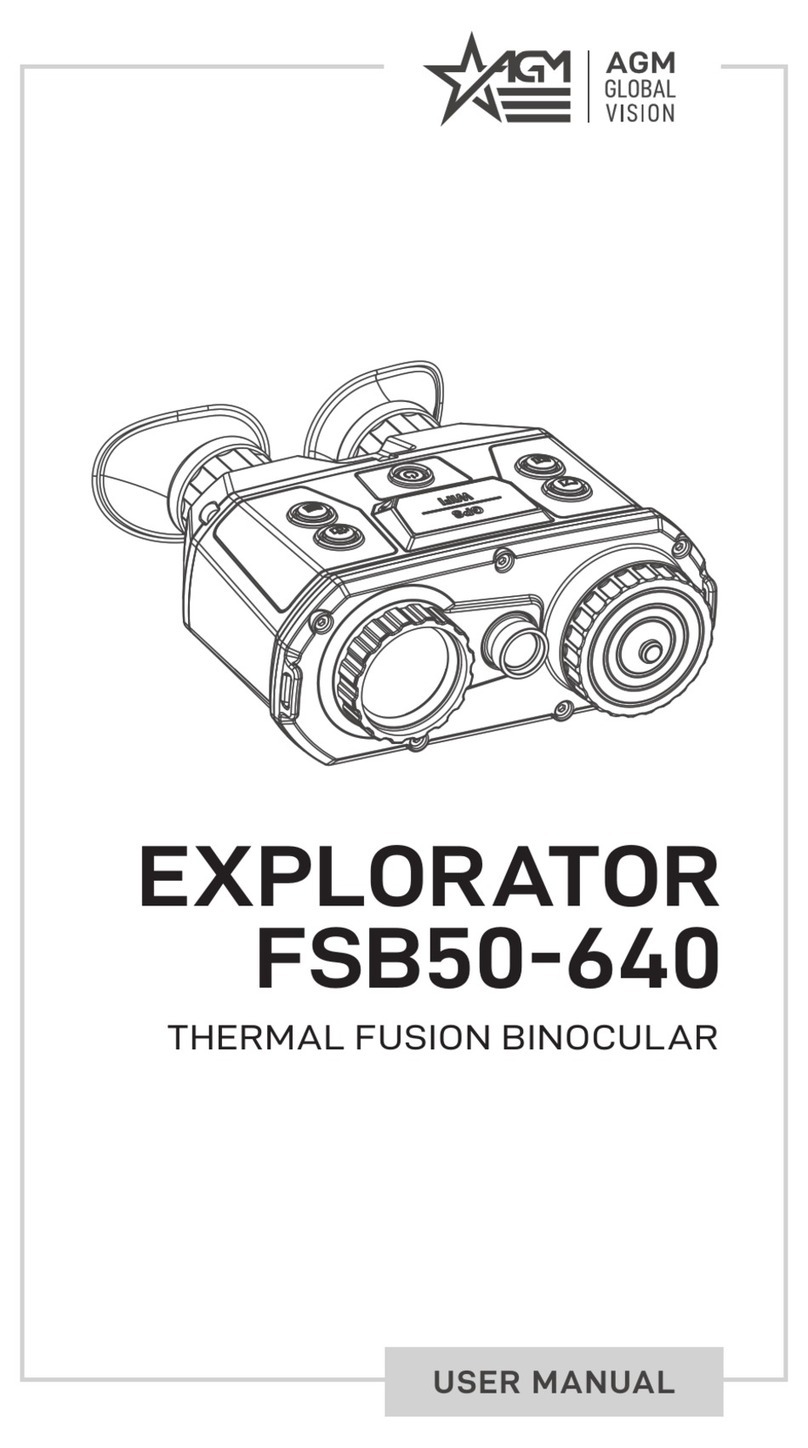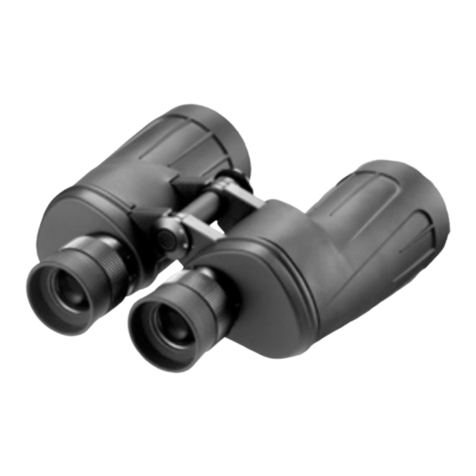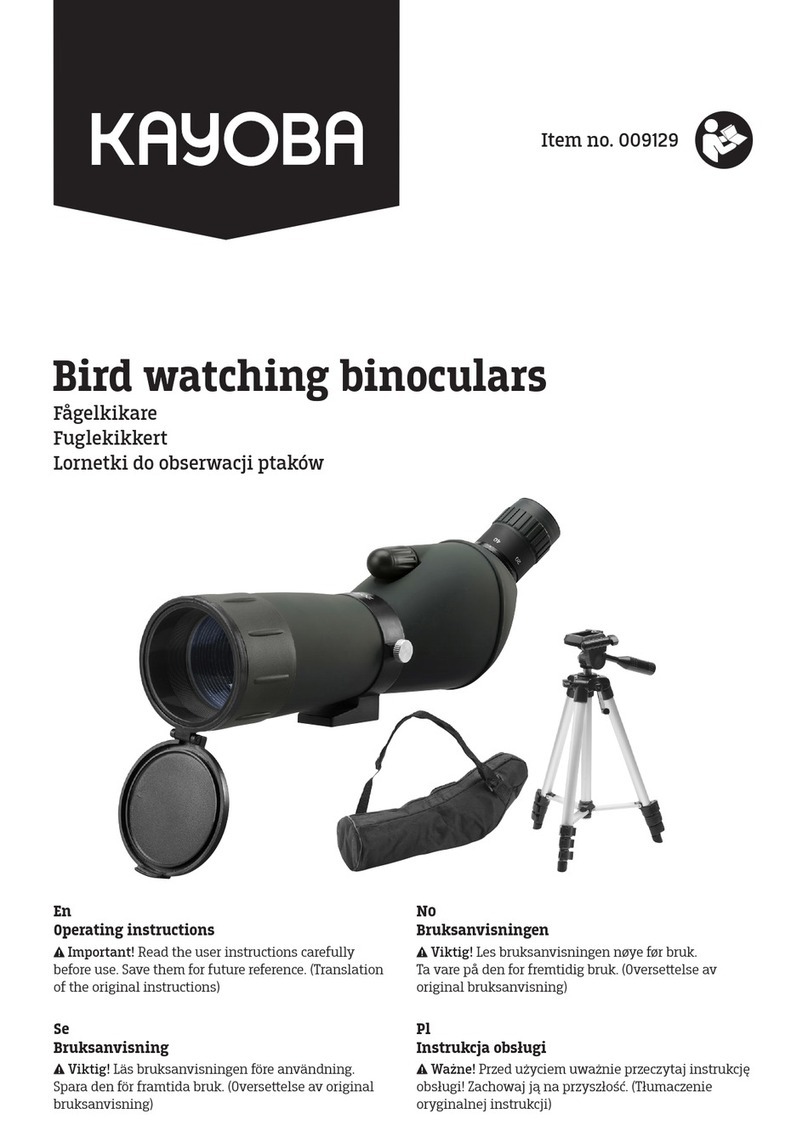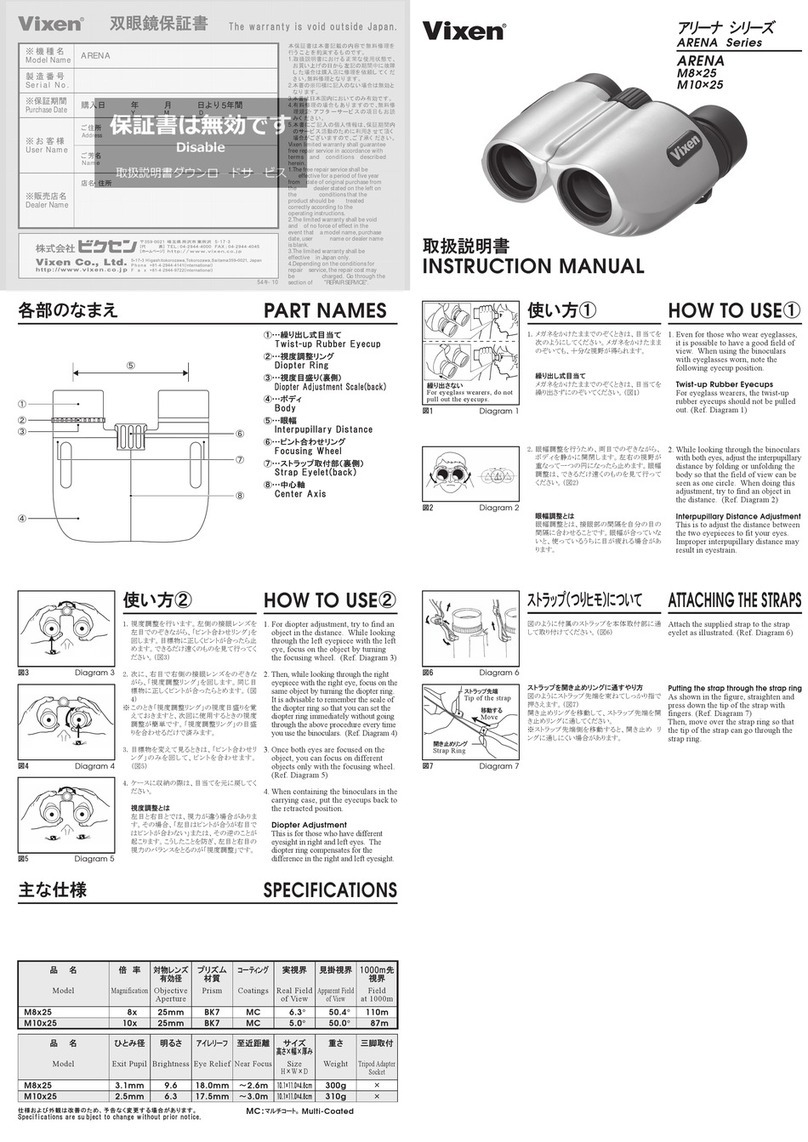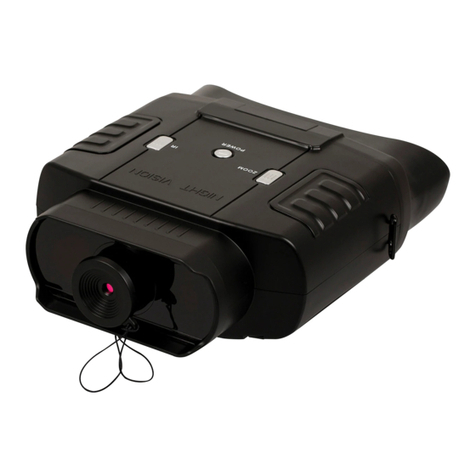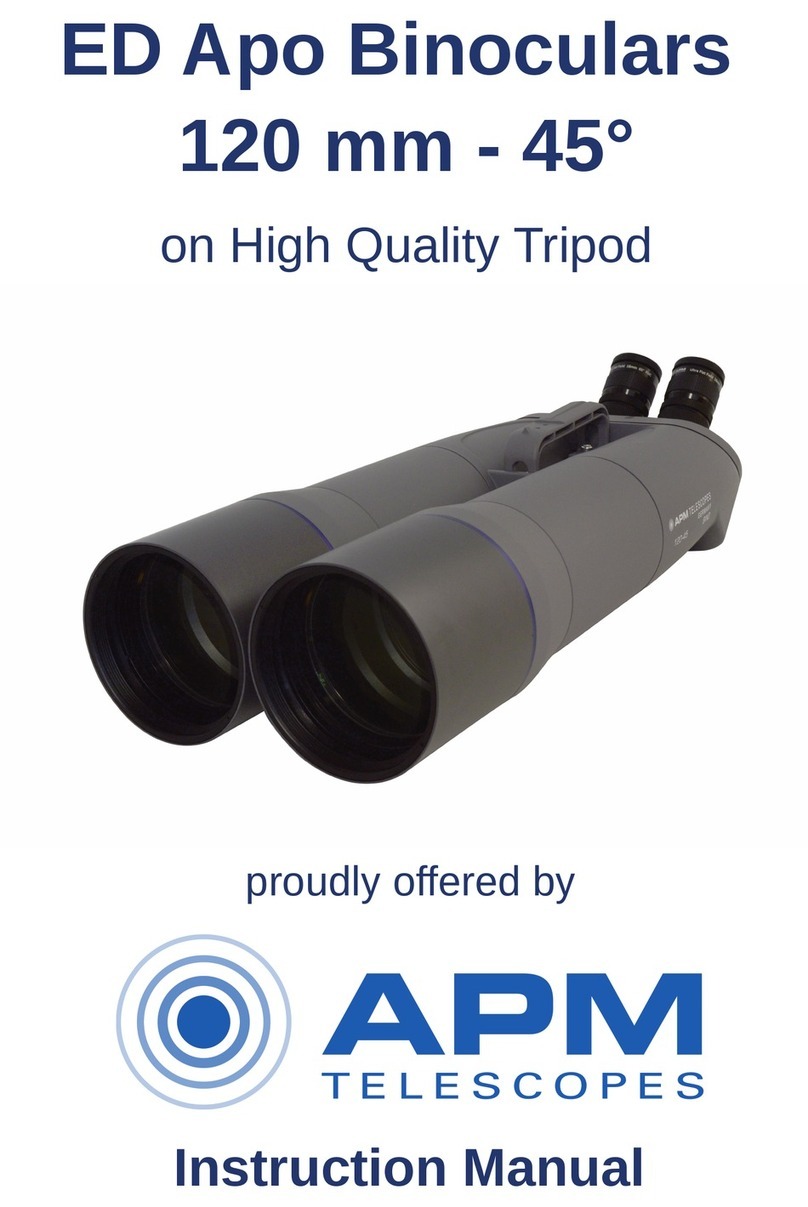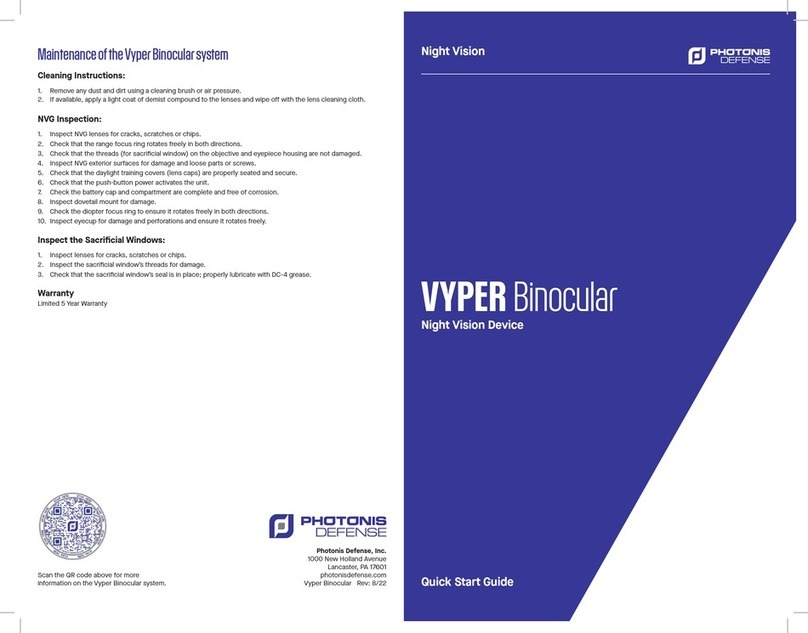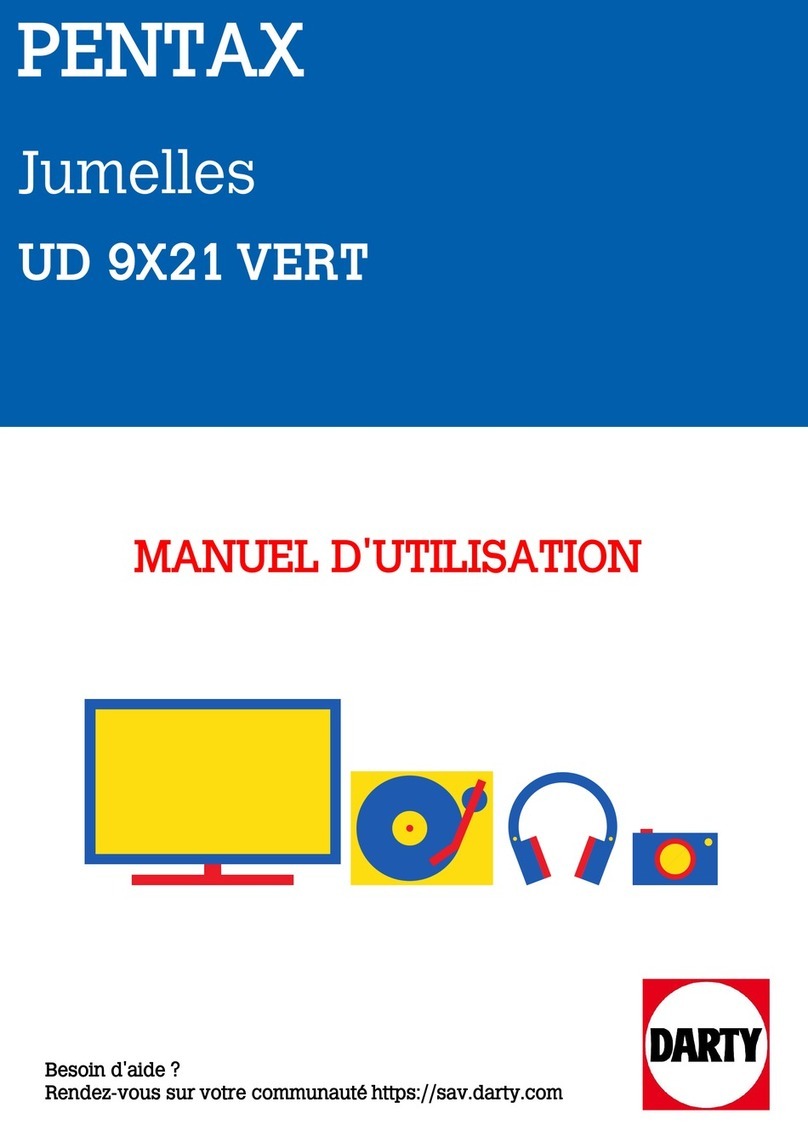
3
Waterproof Binoculars
Orion waterproof binoculars are nitrogen-purged and sealed to be completely water-
proof and internally fogproof. While it is impervious to rain, wind, splashing from a
boat and humidity, do not immerse the binocular in water under any circumstances.
If the binocular becomes wet with fresh water, merely blot it dry with a clean cloth
and clean the lens surfaces as outlined below. Saltwater should be rinsed off com-
pletely and the binocular then blotted dry and its lenses cleaned as outlined below.
If the binocular body becomes dirty, it can be cleaned with warm water and a clean
cloth. If extremely dirty, or oily, clean the body with a dilute solution of warm water
and mild soap on a cloth, then rinse with clean water and blot dry. Do not clean lens
surfaces with soap and water!
Cleaning and Care of Binoculars
The lens surfaces of Orion binoculars are coated with anti-reection coatings that
can be damaged with careless handling. Avoid touching surfaces with ngers or any
coarse material. Most binoculars, eyepieces, and camera lenses are cared for in
a similar manner. All optics, even if stored, must be cleaned approximately twice
a year or whenever they are dirty. The dust that builds up on coatings promotes
mold growth, which etches glass and destroys coatings. Avoid over-cleaning; it can
damage the coatings. Always use lens cleaning tissue and uid that are specically
designed for multi-coated lenses. Do not use uids or tissue that are for eyeglass or
household use.
To clean the binoculars, blow off the lens with a blower bulb to remove the larger
particles. Make sure your hands are clean. Have several pieces of tissue ready. Put
two drops of lens cleaning uid on a piece of lens cleaning tissue (never on the lens).
Gently wipe the dirt off the lens. Quickly wipe the excess with a new, dry piece of
lens cleaning tissue. On larger lenses, clean only a small area at a time, using new
tissue each time. On excessively dirty lenses, wipe across using one stroke for each
tissue, alternating wet and dry. The more fresh, clean lens tissue you use, the less
likely you are to scratch your lenses. Always avoid excessive pressure or rubbing. It
is better to leave a tiny amount of dirt on the lens than to use too much pressure and
destroy the coatings.
Storage and Cold Weather
All optics, when exposed to excessive temperature changes or high humidity, have
the potential to fog up. Always allow the optics to slowly adjust to cold weather by
storing the instrument (in its case) in a cold area such as an unheated garage or the
trunk of a car for a few hours before use. When bringing the instrument back inside
a warm house, store it in a cool area for one to two hours. It is very important to then
open up the case, remove the instrument, then remove the caps, and let everything
dry out overnight. The instrument should be stored in a cool dry place; storing it in
a moist environment will result in mold growth and destroy the optics. This is not
covered by warranty.
